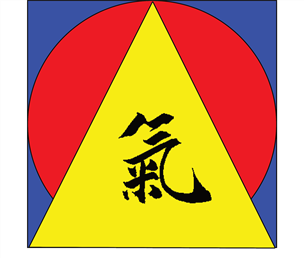Qi Gong comes in many different forms.
As it has a millenary history, Qi Gong has naturally evolved, so now there is not a single Qi Gong school or style and each school or style has at least one set of movements and exercises.
The first written mention of Qi is dated sometime around 1123 B.C., in the I Ching (易經 – Yi Jing or Book of Changes), where it can be found references to three natural energies, the San Cai: Tian (the Heavens), Di (the Earth), and Ren (the Man).
So, about 550 B.C., Lao Zi, the founder of Taoism, wrote in his Dao De Jing that in older times there were breathing techniques to build and enhance Qi.
Legend narrates that an Indian monk, named Bodhidharma (Da Mo in Chinese), arrived in China at the end of the 5th or the beginning of 6th century A.D., and, after his practice had been rejected by the Emperor, went to Shaolin monastery. There, he found that the health of the monks was really poor, so after 9 years of study he proposed a series of exercises to improve this condition. Some of these exercises are now part of the practice of Qi Gong.
The Qi Gong forms taught by Bodhidharma are described in two books:
Yì Jīn Jīng (易筋经 – Muscle-Tendon Changing Classic)
Xi Sui Jing (洗髓经 – Bone Marrow Cleansing Classic)
(plus the Luohan Shou (十八羅漢手 – 18 Luohan Hands), the first set of Kung Fu routine)
Qi Gong evolved in many different ways since then, being divided in 5 main schools:
Chinese Medical Qi Gong
Daoist Qi Gong
Buddhist Qi Gong
Confucian Qi Gong
Wu Shu / Kung Fu Qi Gong
and 5 main categories:
Health Qi Gong
Medical Qi Gong
Life Improving Qi Gong
Physical conditioning Qi Gong
Meditative Qi Gong
In 2003, the Chinese Health Qigong Association officially recognized four health qigong forms:
Ba Duan Jin (八段錦 – Eight Pieces of Brocade)
Yì Jīn Jīng (易筋經 – Muscle-Tendon Change Classic)
Wu Qin Xi ( 五禽戲 – Five Animals)
Liu Zi Jue (六字訣 – Six Healing Sounds)
And, just 7 years later, 5 additional forms were added to the official syllabus:
Tai Chi Yang Sheng Zhang (太極養生杖 – Tai Chi Stick Health Preservation Routine)
Shi Er Duan Jin (十二段錦 – 12 Pieces of Brocade Sitting Qi Gong)
Daoyin Yang Sheng Gong Shi Er Fa (導引養生功十二法 – 12 routines from Daoyin tradition)
Mawangdui Daoyin (馬王堆導引术 – Mawangdui Silk Paintings Qi Gong )
Da Wu (大舞 – Big Dance)
In addition to the official exercises there are many other schools and movements, and I will make another post to try to collect some of those. What is most important to you, as a practitioner, is to understand that all Qi Gong is made for helping you develop and use Qi through movement, respiration, and meditation.
In the Dai-Hara Kizendo we study and practice the following sets:
Ba Duan Jin (八段錦 – Eight Pieces of Brocade)
Xi Sui Jing (洗髓经 – Bone Marrow Cleansing Classic)
Yì Jīn Jīng (易筋經 – Muscle-Tendon Change Classic)
Wu Qin Xi ( 五禽戲 – Five Animals)
Liu Zi Jue (六字訣 – Six Healing Sounds)

